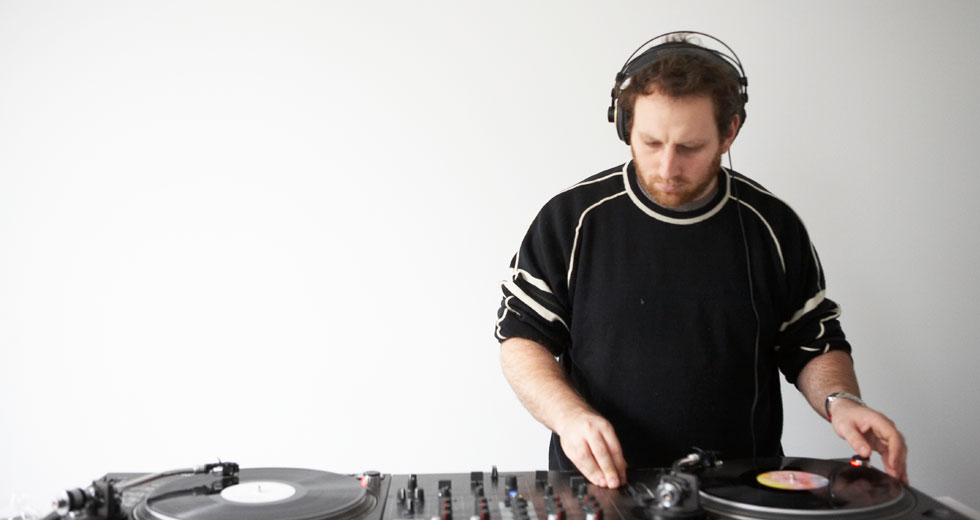You Improve Me
The relationship that Junior Boys co-founder Jeremy Greenspan has with his Canadian hometown is a deep one. Stuart Berman explains why Hamilton, Ontario informs everything he does creatively
On first glance, Hamilton, Ontario doesn’t so much resemble Toronto’s neighbouring kid brother as a Canadian cousin to American border cities like Detroit and Buffalo, where towering architectural reminders of a once-promising past clash with the harsh street-level economic realities of the present.
Outsiders often come upon Hamilton via the Queen Elizabeth Way, the city rising across the water like the impenetrable fortress of the chief villain in some post-apocalyptic thriller – all smokestacks, foreboding factories and exhaust pipes shooting fire into the sky. These are the remaining totems of the city’s steel industry, which formed the backbone for over a century, but has greatly retracted in the wake of global recessionary shocks. This is the Hamilton of popular opinion: grim and grimy, downtrodden and dangerous.

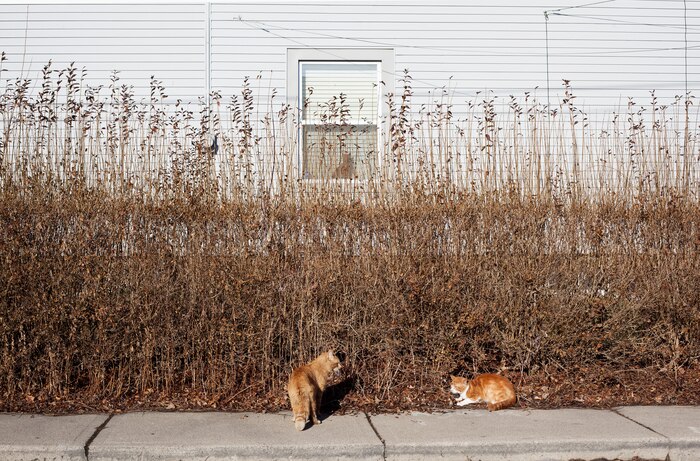
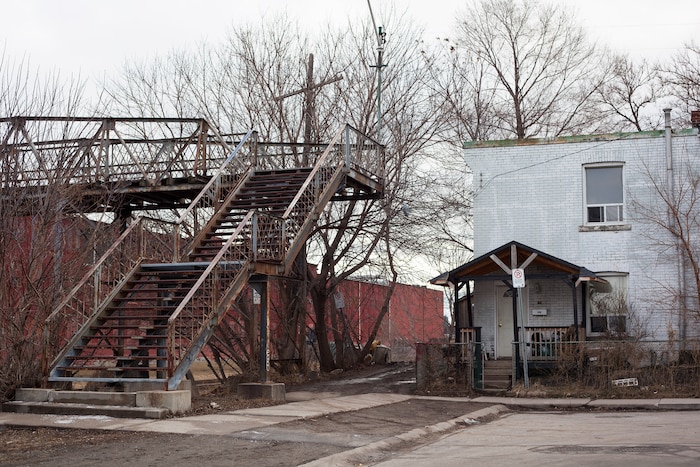
It’s an image that, over the years, has been reinforced by the local music that’s spread furthest beyond the city limits: the skull-splitting squall of proto-punk greats Simply Saucer; the chain-whipped garage rock of Teenage Head; and the fuzz-covered indie-rock acts that congregated around the Sonic Unyon label, the closest thing Canada had to a Sub Pop-style institution in the 1990s. Even the city’s most famous musical export – Daniel Lanois – cut his teeth recording early Simply Saucer sessions in his mom’s basement before becoming a super-producer to the stars.
But when you approach the city from Highway 403 – the in-road for locals – a decidedly different picture of Hamilton emerges. From here, you see rolling hills and placid lake vistas; the magnificent tree-lined escarpment that cradles the city like a pair of cupped hands; and grand, gothic churches more redolent of a British hamlet. It’s the route to the campus of McMaster University, the locus of the city’s burgeoning healthcare and education sectors. A bit further east are the antique shops, farm-to-table restaurants, and boutique toy stores of genteel Locke Street.

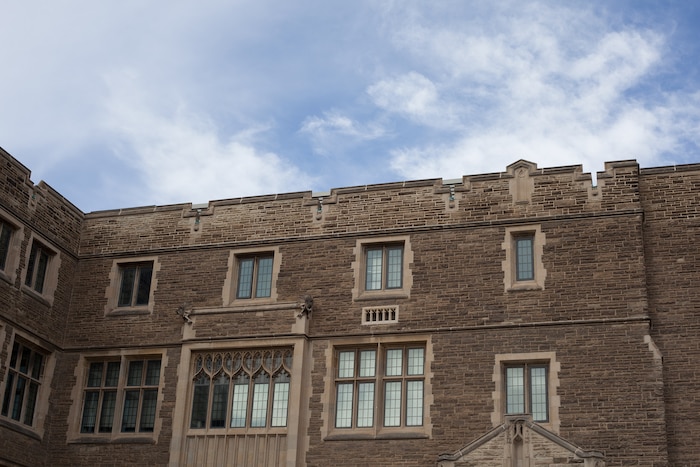
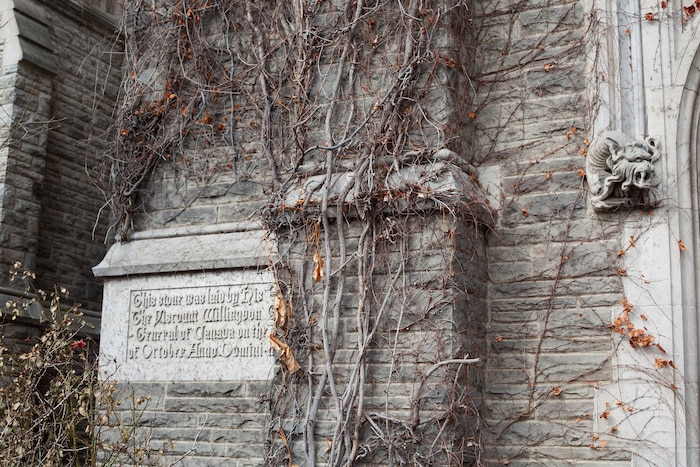
And just beyond that is the city’s prime destination strip, James Street North, a once-decrepit stretch of 19th-century low-rise buildings now teeming with art galleries, vintage-clothing shops, and hipster-baiting cafes with tattooed, creatively mustachioed servers. This is the Hamilton that’s been the subject of countless trend pieces in the local press raving about the city’s rejuvenation.11Torontonians are now reportedly moving en masse to Hamilton, where they can get twice the house for half the price.
Caught in the middle of these two Hamiltons is Jeremy Greenspan. The lead singer and founder of Junior Boys – his long-running electro-pop partnership with Matt Didemus – was born and raised in Hamilton, and he’s never really wanted to live anywhere else. But he hasn’t just lived through the city’s transformation from decaying industrial outpost to modernized mini-metropolis – he’s played a crucial role in driving it. He’s both redefined the sound of Hamilton music for the 21st-century, and also the very idea of what it means to live there.
Junior Boys’ groundbreaking 2004 debut, Last Exit, fashioned a futurist synth-soul sound – part ’80s electro pop, part ’90s R&B, part post-Y2K U.K. garage – seemingly at odds with Hamilton’s blue-collar rocker reputation. But alongside the concurrent rise of local boys Dan Snaith (AKA Caribou) and Stones Throw signee Koushik (both from the adjacent valley town of Dundas), the record shed light on the area’s fertile electronic music scene. (Another product of this network, Alphonse Lanza, would also go on to international success as half of house duo Azari & III.)
These were kids for whom Hamilton’s punk and indie rock traditions meant nothing. While the Sonic Unyon label was bringing national attention to city’s DIY music in the early ’90s, the teenaged Greenspan was obsessed with industrial music, a formative moment obliquely referenced in the title of Junior Boys’ new album, Big Black Coat. “I did strap on the boots,” he recalls over morning coffees, “but I didn’t wear eyeliner.” Before long, the westward gravitational pull of Detroit techno and Richie Hawtin’s Windsor-based M-nus empire had initiated a full-blown conversion to machine music.
“The same people who were into industrial music in Hamilton were exactly the same people who got into techno,” Greenspan recounts. “Our big hero in Hamilton was a guy named Dave Foster. He had this techno track called ‘The Wipe’ he did under the name Teste, which was on Richie Hawtin’s label – Richie Hawtin was everybody’s hero. So we were the 14-year-olds who were hangers-on that looked up to these guys in their early 20s who were putting on raves. And all the parties here were all-ages – that’s why it was appealing to me. One of the reasons I probably I never got into indie rock is there was no real all-ages scene. Dance music for me became my punk music. It was my moment of ‘everything before this was garbage!’”
By Greenspan’s admission, the electronic-music scene in Hamilton was an extreme niche concern – “the kind of guys who were into dance music in Hamilton were all spotty nerds,” he says. But that didn’t deter him from trying to nurture it. After dropping out of high school, he spent a year living with his university-bound sister in England, working at a recording studio, and most crucially, serendipitously becoming flatmates with Steve Goodman – AKA future Hyperdub founder Kode9.
There just wasn’t a scene of any kind. The few of us who were interested in electronic music were awash in a sea of Tragically Hip fans and Deadheads.
“It was the most formative year of my life,” Greenspan enthuses. “It was almost like going to school. But what I was really excited to do was come home and tell all my friends about it, and try to bring some of that energy here. I came back from England when I was 18, finished high school, started a radio show at McMaster, and started DJing 2-step garage – and as far as I could tell, I was the only guy in Canada doing it, because I was connected to Steve and all these guys in England getting me tracks. I would write to record stores Pure Groove and Big Apple and say, ‘Send me all the 2-step garage 12-inches you have!’”
Among the few people in the Hamilton area to take note of Greenspan’s vanguard taste was Dan Snaith, a casual acquaintance Greenspan had previously crossed paths with on the high school band circuit.
“By the time I started getting into electronic music, there were really only handfuls of like-minded people in the area,” says Snaith from his current home in London, UK. “Our group of friends in Dundas were one such handful and we inevitably came across Jeremy and Matt, who were part of another one in Hamilton proper. I remember going to scrappy techno parties – one literally in the basement of a suburban house – and Jer and Matt put on a regular night at [chicken wing joint] Joe Buttinsky’s. But it was pretty much a given that any attempt at building anything of any size around electronic music was a non-starter, though. There just wasn’t a scene of any kind. The few of us who were interested in electronic music were awash in a sea of Tragically Hip fans and Deadheads.”
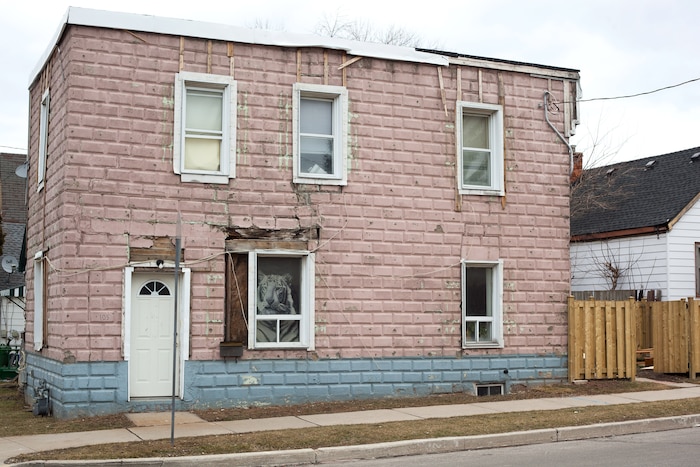
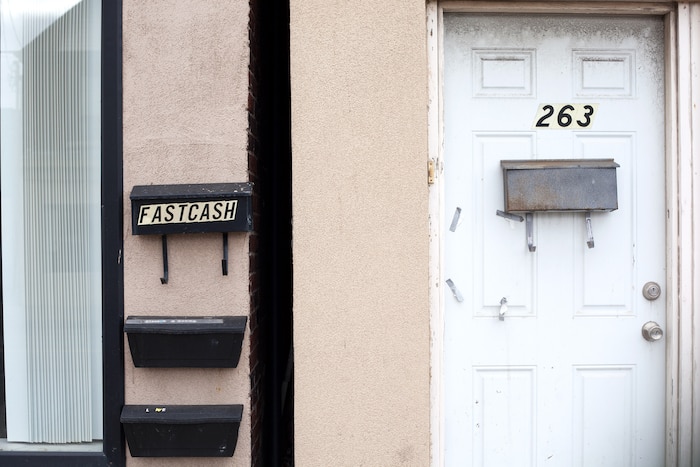
By the turn of the millennium, Snaith had relocated to Toronto for school, piecing together his first recordings as Manitoba and hosting a popular genre-spanning party called Social Work, at which Greenspan was a frequent guest. And for a moment, Greenspan joined him in the city, though not for any musical purposes. While he had already begun recording what would become Last Exit at a McMaster University studio with collaborator Johnny Dark, Greenspan moved in with a Toronto-based girlfriend in the city’s east end, far removed from the downtown dance club district and west-end indie rock haunts. “I got a job working at the University of Toronto. I was never involved in the music scene there. I lasted in Toronto maybe a year or two, and I was just like, ‘Fuck this.’”
I’ve always felt like Hamilton is where I belong.
Greenspan returned to Hamilton in 2003 to complete Last Exit, by which point Dark was out and Didemus was in. But while Snaith had relocated to England to do his P.hd and facilitate Manitoba’s ascent – making the leap from the modestly scaled Leaf label to mega-indie Domino Records in the process – Greenspan steadfastly stayed put in Hamilton. “I’ve always felt like Hamilton is where I belong,” he reasons.
But then the initial ascent of Junior Boys – triggered by early notices on Goodman’s Hyperdub site and other UK blogs – provided an early case study that, in the online age, an independent artist didn’t need to follow traditional industry routes. Through the internet, an artist could thrive anywhere – even Hamilton. And in Junior Boys’ case, the principals need not even live in the city: shortly after Didemus had officially come on board as Greenspan’s foil, he moved to Berlin, consolidating their creative partnership through file-swapping.
But if Junior Boys’ success was a product of the internet, it’s had IRL effects in Greenspan’s hometown. And that’s because it was so fortuitously timed. In the mid-2000s, you couldn’t just find a super-cheap house in Hamilton – you could buy an entire downtown building.
It’s no exaggeration to say, that had the music supervisors for So You Think You Can Dance not had such discerning taste, Hamilton might be a different place today. In 2007, the popular competition show soundtracked a routine to Junior Boys’ “In the Morning,” the breathy lead single from the group’s sophomore release, So This Is Goodbye. Suddenly, after years of odd-job impoverishment, Greenspan was flush with cash.
“I was insanely broke when we did our first album, and insanely broke when I did our second album,” Greenspan says. “But with that second album, we had a minor hit and got put on television shows and all this stuff. I finally had some money – and I’ve always been really bad with money. So I thought to myself: ‘What the hell do I do with this money? I’m going to waste all of it!’ It seemed to me, the best thing to do with money is put it into property, because if you buy property, then you don’t have access to that money. And to put it in perspective: Hamilton is cheap now to some extent. But it was crazy cheap then. I wanted to buy a building – which, to someone outside of Hamilton, might sound like I was loaded, but I wasn’t loaded. It was just that cheap.”
Greenspan and I are sitting in the product of that investment: The Brain, the bar that occupies the ground floor of the James Street North building Greenspan co-owns with his business partner, Brad Chichakian. It’s a multi-purpose space, operating as a café by day, and bar and DJ-event venue by night, with a cozy, cantina-style interior. Greenspan refers to it as his “living room – my studio is right down the street.”
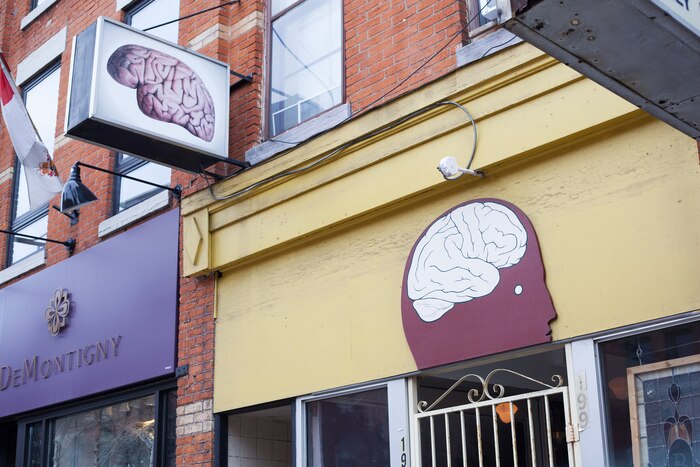

Now six years old, Greenspan proudly calls The Brain a “Hamilton institution,” and its parade of colorful characters provided him with ample lyrical inspiration for Big Black Coat. “Thematically, the album’s about living in a Nowheresville town. I have a sentimental attachment to people who find themselves in places that are kind of their own, but are isolated. My albums are so much about Hamilton.” (And as if Greenspan’s civic pride was ever in doubt, he turned up at our interview sporting a vintage yellow t-shirt for Ivor Wynne Stadium, former home to the Hamilton Tigercats of the Canadian Football League.)
But much like the early success of Junior Boys, Greenspan’s second career as a barkeep was a product of pure happenstance. Before owning the building, Greenspan was one of its tenants, renting out the third floor as his studio. When the previous owner cancelled plans to move his own art-supply store into the ground level in favour of another nearby building he recently acquired, Greenspan and Chichakian offered to take the three-storey edifice off his hands. At the time, the first floor was occupied by a driving school, and foot traffic on James Street North was scarce.
By the mid-2000s, though, enough independent storefront galleries had popped up on James Street North to facilitate a loose monthly gathering called Art Crawl, where curators coordinated their openings for the second Friday of the month, allowing patrons to hop from one to the other. Suddenly, James Street North was showing signs of life at night. But there was just one problem.
“After Art Crawl, everyone would go back to my friend Gary Buttrum’s house and it would turn into a big party,” Greenspan recounts. “But Gary, obviously, soon became sick of that situation, and everyone would say the same thing: ‘Why isn’t there a fucking bar on the street we can go to after Art Crawl?’”

Six years on, The Brain’s casual vibe hasn’t changed – “it’s still neighbourhoody, with a pretty eclectic mix of people,” says Greenspan. But the surrounding area has utterly transformed. James Street North is now home to several restaurants, bars, boutique general stores. And the buzz on the street hits a fever pitch the second weekend of September with Super Crawl, a sort of Art Crawl-on-steroids that gathers food trucks, street shopping and A-list indie rock acts. Its first edition, back in 2009, was a small street festival showcasing local bands for a gathering in the low four figures; these days, it attracts headliners like Spoon and Sharon Jones and the Dap Kings for crowds of 100,000. As a sidewalk mural on James proudly proclaims, in Hamilton, “art is the new steel.”
The Brain isn’t wholly responsible for all that activity. It’s impossible to overstate the city-boosting efforts of Sonic Unyon label heads Tim Potocic and Mark Milne, founders of Super Crawl, and trailblazers in showing how savvy indie musicians can easily become budding property barons – they purchased the nearby building that houses their label offices back in 1996 (and currently rent part of it to Greenspan for his studio), and they’ve scooped up several properties on James Street North since. But The Brain was way ahead of the curve in establishing James as a daily destination strip, drawing patrons even when there’s no street festival taking place.
Now I get the sense that there really is a sense of pride and identity about the cultural things going on in Hamilton.
“There’s definitely an active scene of interesting cultural things happening in Hamilton in a way that either didn’t exist or I wasn’t aware of when I was younger,” says Snaith. “And one thing that has struck me is how supportive Jeremy is of the whole thing. He’s very proud of where he's from and the people that do amazing things in the area, and he wants them to be recognized more broadly. When I was young, there were isolated but really interesting and creative people around the Hamilton area – I would have probably ended up making very different music if that hadn't been the case – but they didn't seem to cohere into a scene, really. Now I get the sense that there really is a sense of pride and identity about the cultural things going on in Hamilton, and all the people doing creative things there have each other's backs and support each other.”
James Street North hasn’t fully gentrified – the big chains have yet to set up shop here. Evidence of the city’s deeply entrenched economic woes is still readily apparent; spare-change solicitations on James are still the norm. And though James now boasts the proudly skeezy rock dive This Ain’t Hollywood and performance-art space HAVN (just off the strip on Barton), Greenspan feels the area’s renewal has been more of a boon for the art scene than the music scene.
Hamilton is the sort of city that attracts big names like Black Sabbath and Garth Brooks on their secondary-market tours, while on the other side of the spectrum, a thriving underground avant/noise scene has taken root in house shows and DIY spaces. But the city is still lacking venues in the middle tier – the 500 to 1,000 capacity rooms that could draw more touring acts to town and facilitate the ascent of more local musicians.
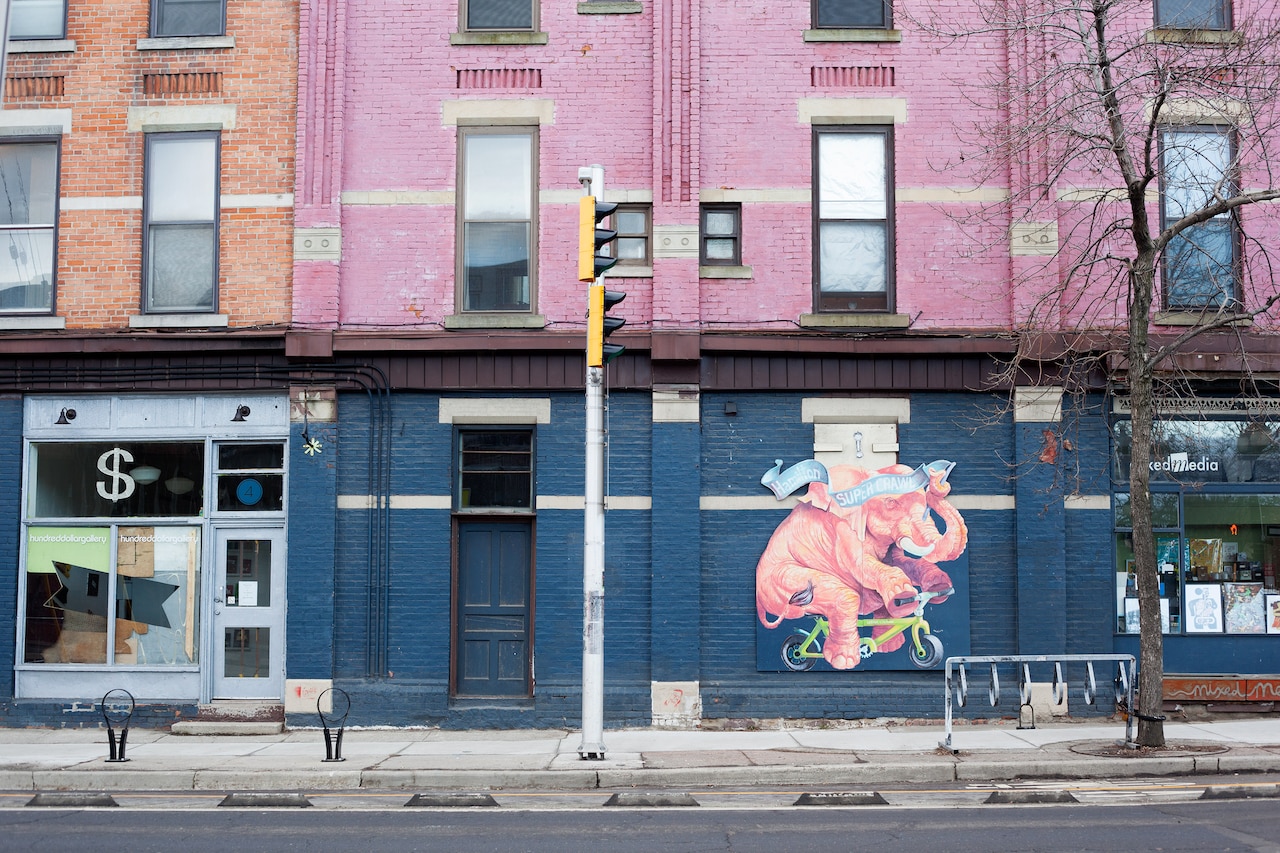
Greenspan fears that the opportunities for change in that regard may already be drying up. With some 3,000 downtown condo units coming to market over the next few years, Greenspan is concerned that Hamilton’s gradual, organic growth will be stunted by opportunistic realtors who are already charging gentrification-level prices in areas that have yet to actually gentrify.
“I’m always a champion of small business – that’s what makes cities great,” he says. “But you look at buildings on shithole Barton Street [which intersects James], and the prices there are already so inflated [past the $300,000 mark]. Those buildings should be, like, $100,000. And if you don’t have them for $100,000, then some interesting person can’t go and buy that building and do something creative with it. If that’s not happening, then good luck with your gentrification process, because it’s not going to happen. In the process of gentrification, you can’t skip a step.
As someone who’s grown up in a city that’s been ravaged economically, I’m not into romanticizing poverty.
“There is a perfect balance to be had,” he continues. “You don’t want a situation in which people who aren’t rich feel as though they don’t belong in a space. And the inverse is true as well: you don’t want a city where all there is squalor, and which people who open small businesses can’t make a go of it. As someone who’s grown up in a city that’s been ravaged economically, I’m not into romanticizing poverty. The thing about the gentrifying process is, when you’re the artist who moves in, it’s a super-exciting process. Because the ability to buy up your own space and do whatever you want with it, is a thrilling thing, and it’s something everyone should be able to experience.”
However, Greenspan does offer some words of caution for any prospective artisanal cheese-shop or gourmet-taco joint owners swooping into town under the belief that Hamilton has become the Williamsburg to Toronto’s Manhattan: “To anyone moving into Hamilton, if you don’t have a tolerance for a degree of human misery, you’ve chosen the wrong city,” he says. “And you don’t just need a tolerance, you have to kinda like it.”
All images: Hollie Pocsai

